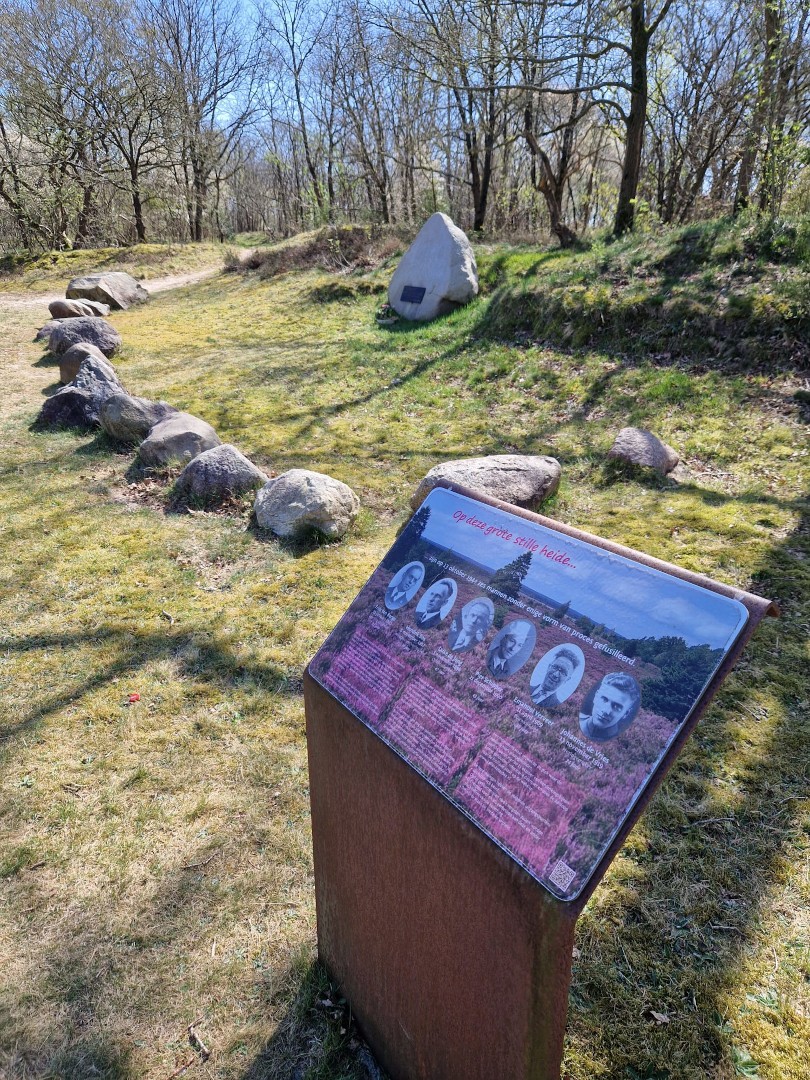The six men who were executed on October 13, 1944, at the site where the current monument stands, were what the Nazis called “Todeskandidaten”—death candidates. These were randomly selected prisoners, executed without trial as an act of reprisal.
The ‘1944 Memorial Monument’ in Kallenkote was erected in memory of these six civilians, who had resisted the occupation in one way or another. The monument consists of a large glacial boulder with a commemorative plaque, surrounded by a semicircle of smaller stones. The plaque reads:
“On this site, on 13 October 1944, the following were executed by the occupiers:
F.H. ten Berge, 21 years old
H.G. Bos, 36 years old
U. de Jong, 47 years old
P. Schipper, 43 years old
E. Verver, 35 years old
J.A. de Vries, 24 years old
Without resistance, there would be no freedom.”
What exactly happened on October 13 was revealed after the war through court records. That day, six cell numbers were randomly chosen, and the selected men were taken to the shooting range at Kallenkote. They were lined up, and Hauptscharführer Habener, leader of the firing squad, read aloud the the order to kill issued by Hans Albin Rauter, the Higher SS and Police Leader in the Netherlands.
The official reason given for the execution was “illegal possession of weapons.” Moments later, the six men were shot.
Shortly afterward, Jan Hendrik van Dalen, a local farmer working a nearby field, was ordered to retrieve the bodies and transport them to the cemetery in Kallenkote.
